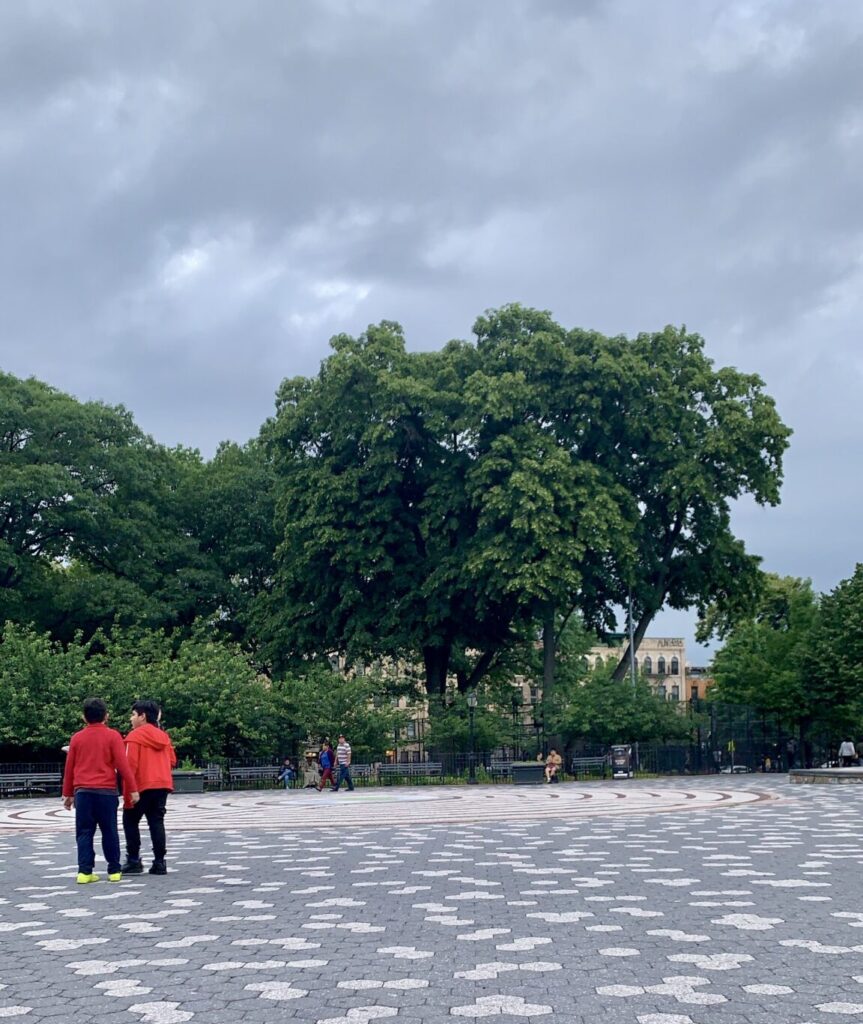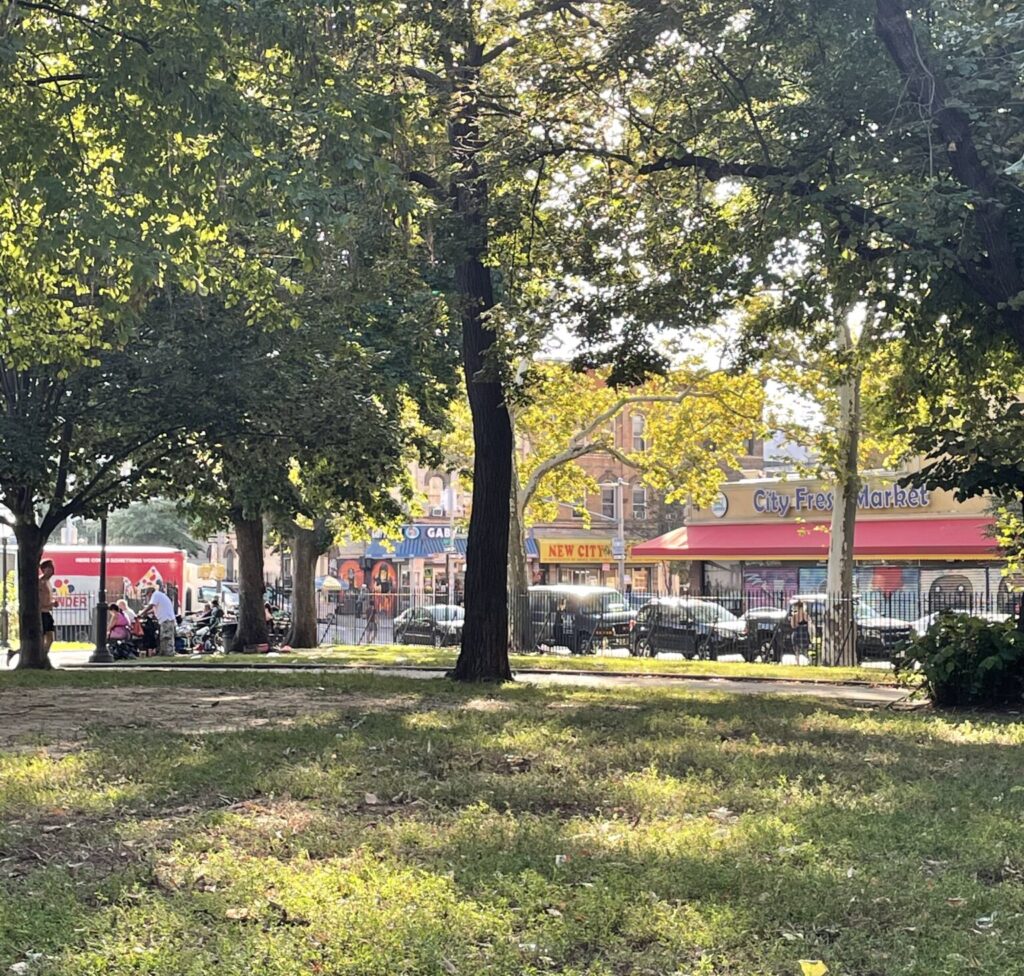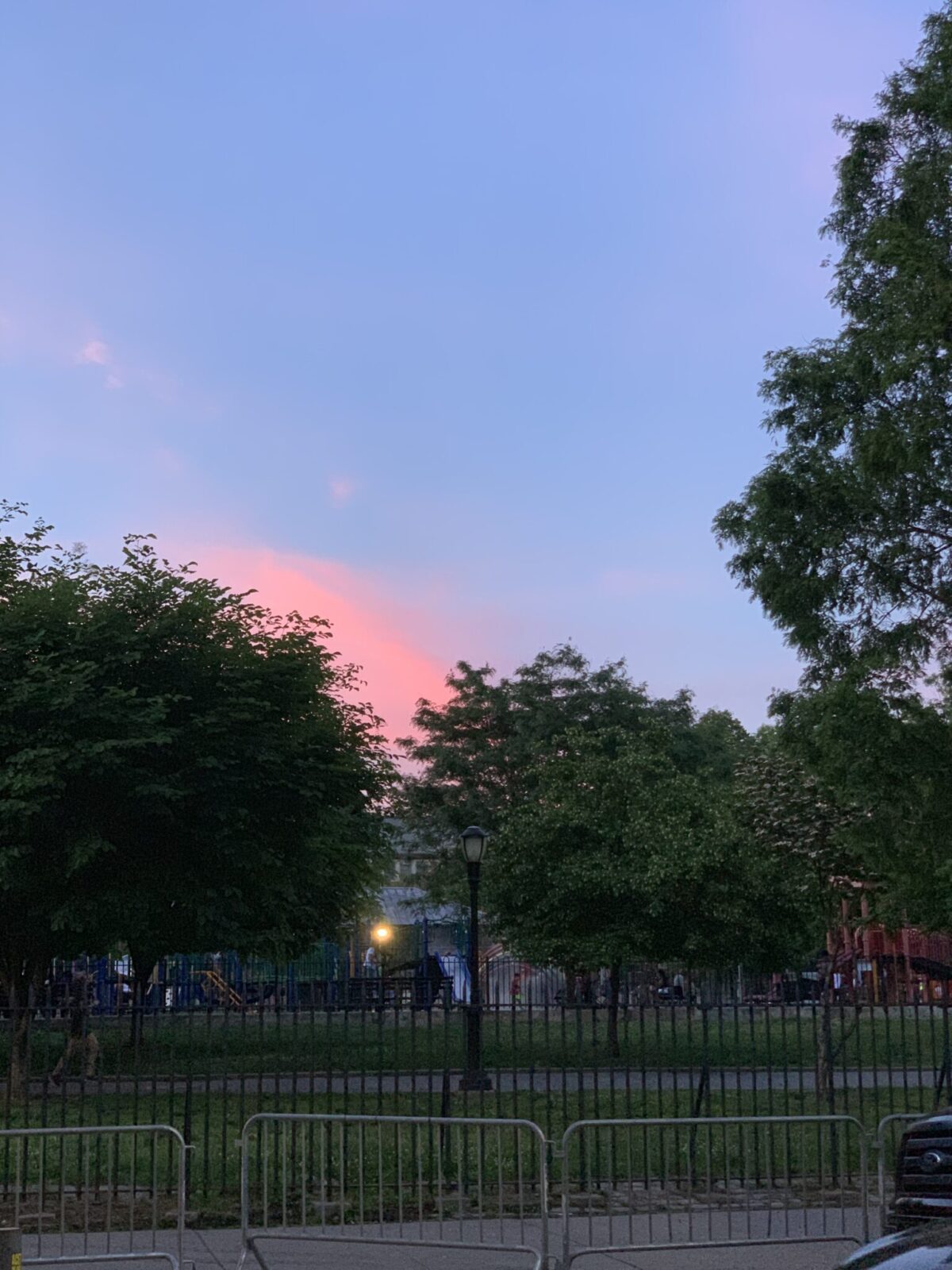Introduction
In this project, I aim to trace the relationship between the right to the city and homeless use of public space. To that end, I will first discuss the origins of the right to the city in urban sociology. Through Robert Park’s Human Communities: The City and Human Ecology and Harry Braverman’s Labor and Monopoly: The Degradation of Work in the Twentieth Century, I will evaluate the relationships of capital and urbanization in the creation of modern space and life. Then, I’ll discuss David Harvey’s Right to the City as a response to Braveman and Park’s concerns. In this portion, I will also discuss critiques of Harvey’s right to the city and Cameron Duff’s effort to materialize this right through homeless life. I’ll evaluate the ways homeless people in my community seize the right to the city as a concrete response to the alienation and deprivation of the capitalist city. Lastly, I’ll conclude by discussing how through their seizure of the right to the city homeless people create alternative urban lifestyles.
To break up the text and illustrate the space of Maria Hernandez Park I have included various pictures I’ve taken around the park in the last few years. The featured image is a photo of Maria Hernandez at sunset, taken the first week I moved into this apartment. Intentionally, there are no pictures of the park’s homeless residents and their spaces, as to me to photograph them feels like an unnecessary infringement on their right to privacy, even as they live in public spaces.
The City or the Market, Shaping Lifestyles
In his landmark book Human Communities: The City and Human Ecology, Park notes that “in making the city man has remade himself.” (1952, 73) Park recognizes the city as a site of alienation, stating that “everyone is more or less on his own in a city.” (1952, 74)While Park recognizes in some way that that which he regards as social ill is a product of poverty and deprivation, he sees much of the city’s function as an act of chance. Park regards the development of the city thus far as a natural one, not one of institutional decision-making and design. Thus, Park advocates for using social science to create and inform systems of social control.
However, that which Park attributes to urbanization is actually a problem of Capitalism. Park traces the alienation he attributes to urban life to the end of feudalism, stating that as peasants came to the city they were “emancipated from the control of ancestral custom, but at the same time [they are] no longer backed by the collective wisdom in the peasant community.” (1952, 74) Though of course, the end of feudalism also marks the beginning of capitalism, which transforms workers’ relationships to the city, to themselves, and to each other. With capitalism, work is transformed through the transformation of labor to labor power, a raw material for capitalist production. This alienates the worker from work and from himself. This process is deepened and becomes the alienation of the worker from community and from each other through the expansion of the market.1
In his book Labor and Monopoly Capital, Braverman traces the ways that markets have become the center of human life. Braveman recognizes urbanization as only one part of the process through which markets have infiltrated all parts of human life, noting that in early stages of capitalism most products used in social reproduction were produced and consumed within the family unit. Braverman reminds readers that “Queens County and much of Brooklyn was semirural in 1890, and many families were as dependent on small-scale agriculture as on the industrial or commercial employment of men in the families.” (1973, 189-190) Braverman notes that the changing physical space of cities is only one step in the intrusion of the market into social reproduction, while the increase of urban density destroys the ability of the family to function as a productive unit, the market steps into fill the gap. Those who were once responsible for producing for the maintenance of themselves and their families are hired to fill that role for capitalist production, also giving them “the warewithal to purchase the means of subsistence from industry.”(1973, 191) The process of market penetration into human life is finalized when purchasing the means of survival from the market becomes cheaper than producing them, generating the final push of all people into capitalist production.

Harvey’s Right to the City
In his articulation of the right to the city, David Harvey builds on both of these analyses. Recognizing the marriage of the geography of the city and capitalist cycles of reinvestment, Harvey traces the ways cities have been rebuilt to meet the needs of the market, restructuring the lives of the city’s residents. Like Braverman, Harvey recognizes the way that household products brought the market into increasing functions of the home have been a consequence of capitalist urbanization. Further, Harvey unifies this with structures of neoliberal control, such as through debt peonage to the capitalist system. (2008, 28) Realigning these restructurings have deepened alienation and immiseration, Harvey argues that the public’s right to direct urban processes is itself a counter to capitalist subjugation, stating, “The right to the city is far more than the individual liberty to access urban resources: it is a right to change ourselves by changing the city.” (Harvey, 2008, 23)
As neoliberal urbanization has subjugated the working class, the public has come together in reaction, seizing the right to the city, by rejecting capitalist reinvestment and the lifestyles it has created. Harvey recognizes the Paris Commune, feminist centering of the suburbs, and the civil rights movement as moments where the public has formed a common to reject capitalist domination following periods of surplus reinvestment in urban development. Still, the structuring of social life in the modern city acts against solidarity, the formation of collective identity as a working-class or urban community, and the seizing of collective rights. As Harvey notes, “ [the] quality of urban life has become a commodity” (2008, 31), as all aspects of life, including urban space, have become the domain of the market. The transformation of public space into a site of consumption transforms public space into alienation, not community. This alienation becomes enmeshed with urban lifestyles, which Harvey identifies, stating, “This is a world in which the neoliberal ethic of intense possessive individualism, and its cognate of political withdrawal from collective forms of action, becomes the template for human socialization.” (2008, 32)
While Harvey calls for the seizure of the right to the city through collective action, the ways he sees this happening are murky. While his argument that we should all demand increased democratic management over the city and capitalist reinvestment is ideal, he does not discuss tangible ways in which the right to the city can be seized or enacted. In general, he states that there are verified opportunities to confront the global capitalist system, now embodied through finance capital, in local and global circumstances, but does not discuss how these opportunities are seized or exploited.

Materialism and the Right to The City
This vaguery becomes the center of critique and reaction in Cameron Duff’s “The Affective Right to the City.” Duff claims that as Harvey identifies the shaping of urban lifestyle he risks “ reifying the notion of ‘urban experience’ in ways that divorce it from the lives of any particular group.” (2017, 519) Further, he argues that the right to the city can avoid becoming a rhetorical device only by identifying the ways in which the city’s residents enact their right to the city in the world as it is. In this vein, Duff embraces the understanding of the right to the city as “a ‘political process that materializes the social order which it seeks to enact.” (2017, 519) With the goal of making this right material, Duff centers his analysis of the right to the city on the position and effect of homeless people living publicly in the neoliberal city.
Duff identifies that homeless people are unique in that their “daily lives are framed by their putative exclusion from the city.” (2017, 517) In this instance, I want to further develop Duff’s claim. Homeless people are certainly not the only group to experience ‘putative exclusion from the city’; in many ways Black people and other people of color face ‘putative exclusion’ through surveillance, policing, and incarceration. Homeless people’s relationship to the city is unique due to their relationship to the city as a cite of consumption. Homeless people are the only residents in the neoliberal city whose lives take place largely outside the market. This makes their policing take on particular meaning as it becomes protection of neoliberal urban space as the market’s domain.
In recognizing how homeless people embody a right to the city, Duff also seeks to evaluate the way their performance of this right has a tangible effect on the larger community. Duff seeks to measure this through Judith Butler’s ‘performative theory of assembly’ in which, as Duff summarizes, “Butler locates the body and its performative and expressive capacities at the center of political demands for a ‘more liveable set of economic, social and political conditions, no longer afflicted by induced forms of precarity’” and in which individuals and communities fight for a “‘right to appear[,] to be visible.”(2017, 517) In a world in which the public space is shaped and dominated by the market, in seizing the right to appear, homeless people – who do not interact with the market as consumers, do not engage in normative urban lifestyles, and embody the violence of the capitalist system – seize the right to remake the city (2017, 519).
Duff clarifies that homeless appropriation of right to the city is an active and not passive process as he articulates that when homeless people gather in public it is not just that they have nothing to do or nowhere else to go, it is a choice in which they assert their presence and occupy a space intended to exclude them to meet their needs. In so doing, they are asserting “a practical, living expression of resistance to precarity.” (2017, 521) This action by homeless people is not just symbolic, but affective. Further interpreting Butler, Duff states, “her work challenges us not to ask what the homeless body means, but what it does, how it interacts with bodies, human and nonhuman.” (2017, 527) This means that the power of this resistance comes through its relationship with the non-homeless public. In seeing homelessness, all members of the community are forced to recognize in some way the violence and deprivation of a society and public shaped by the market. Further, these interactions become concrete as the concern is no longer “homelessness” the idea, but the real situation of the homeless person in front of you.

Maria Hernandez
For me, Duff’s theories of homeless embodiment of the right to the city take shape as I consider my interactions with my homeless neighbors in my community. I am not a native new yorker and I live in Bushwick, a gentrified and gentrifying community. I love my neighborhood, but am also aware that in living here I am part of a process of displacement. For the last three years, I’ve lived across the street from Maria Hernandez Park. Renovated under the Bloomberg administration2, Maria Hernandez is a center of Bushwick community life. The park is frequented by all members of the neighborhood: skaters fill the center circle, people lounge along its grass and benches, and the courts are filled with neighbors playing basketball, soccer, and ecuavoley. Saturdays, a farmers market coordinated by Riseboro Community Partnership lines the Knickerbocker Ave side of the park, and on Sundays street preachers take their place, giving services in Spanish and English. While living along the park can be loud, it’s incredibly special to be a constant audience to a space where the community comes together.
Importantly, the park is also a space where the neighborhood’s homeless residents pass time. Through summer days, they sit along the benches on Starr street together, talking, drinking, lounging, and napping. Some bring their own chairs a few bring tents, some sleep on the grass or under the trees around the bench. I recognize these people as my neighbors and I am glad that we all come together in the park. Still, passing my homeless neighbors I recognize the ways that I am complicit in cycles of capitalist reinvestment and the dispossession and displacement of gentrification. While I generally carry this awareness, homelessness uniquely puts the violence of this complicity on display. While I am aware that 17% of my neighbors are food insecure, I cannot see who is food insecure when we come together in the park, but in seeing my homeless neighbors I am reminded tangibly and personally of the failures of the existing system.
The ways in which homeless occupation of the park is an active seizing of a right become clear as the police close the park at night. Police are not a constant presence in Maria Hernandez, as they are in many parks in manhattan, but they are a visible one. During the park’s busiest hours they drive through, taking up the majority of the sidewalk and surveilling Bushwick’s residents. During these hours police do not disturb homeless people in the park, but at closing, they direct all homeless people to leave their belongings in the park before locking the gate. While these residents are simply able to re-enter the park for the rest of the night through the entrance to the dog park, this demonstrates a constant cycle of displacement by institutional control over public space and constant resistance to this control. Further, for me as a neighbor of the park, this puts the structures of social control on display
Homeless Life Outside the Market
Beyond what I can see in my neighborhood park, other studies of homeless life demonstrate that through the seizure of their right to the city homeless people can also create new urban lifestyles and communities. In her article “‘It’s not like your home’: Homelessness Encampments, Housing Projects, and the Struggle over Domestic Space”, Jessie Speer identifies that through the shared creation of homeless encampments, “homeless communities… create non-propertied homes.” (2017, 520) In this project, homeless people create a space for themselves which fully contradicts the foundations of the neoliberal spaces in which they reside, motivating efforts to disrupt homeless encampments through policing and policy. Through their occupation of the city with encampments, homeless people are also able to create new community structures and new lifestyles. In her writing, Speer reflects that in creating encampments, homeless people create a “stable community” with a culture of mutual care which “often surpassed any care provided by local institutions.” (2017, 526) In seizing the right to the city as a community, homeless people are able to “remake themselves” in opposition to capitalist individualism.
1: Braverman explains this process in the first chapter of Labor and Monopoly Capital, “Labor and Labor Power”
2: Harvey discusses this period of urban planning, stating “The right to the city, as it is now constituted, is too narrowly confined, restricted in most cases to a small political and economic elite who are in a position to shape cities more and more after their own desires.” (2008)
Bibliography
Braveman, H. (1998). Labor and Monopoly Capital: The Degradation of Work in the Twentieth Century. Monthly Review Press.
Duff, C. (2017). The Affective Right to the City. Transactions of the Institute of British Geographers, 42(4), 516–529. https://doi.org/10.1111/tran.12190
Harvey, D. (2008). The Right to the City. New Left Review, 53(SEPT/OCT 2008), 23-40.
Park, R. E. (1952). The City As Social Laboratory. In Human Communities: The City and Human Ecology (pp. 73–87). essay, Free Press.
Speer, J. (2017). “It’s not like your home”: Homelessness Encampments, Housing Projects, and the Struggle over Domestic Space. Antipode, 49(2), 517–535.


